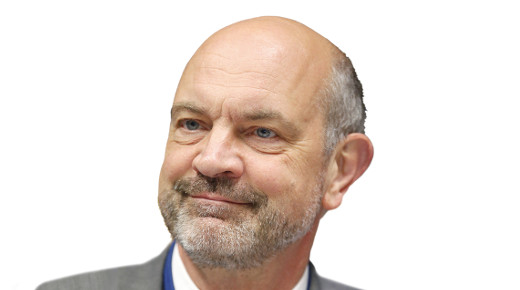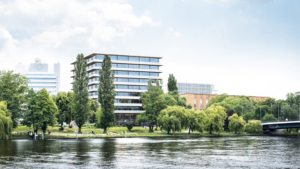
Merging industries
In mid-November, the European Commission tabled the long-awaited review of its Bioeconomy Strategy and Action Plan. European Biotechnology spoke with Waldemar Kütt, Head of Unit Bioeconomy Strategy, about the development the bioeconomy has made since its launch in 2012 by the European Commission and the instruments needed to attract investments, make it circular, and create a stable policy environment for companies and investors.
EuroBiotech_ Mr Kütt, could you please briefly outline the process that led to the decision to review the EC’s Bioeconomy Strategy and Action Plan?
Kütt_ The review was done because we had reached the mid-term of the Action Plan and Strategy. Furthermore, the Circular Economy Action Plan of December 2015 requested that the bioeconomy review should assess the contribution of the bioeconomy to the circular economy. So basically the review evaluates the progress in the 54 actions within the Bioeconomy Action Plan and determines the contribution of the bioeconomy to the circular economy.
EuroBiotech_ What will be the new goals of a renewed Strategy and Action Plan going forward?
Kütt_ At the beginning of November, we were still working on the review of the Strategy. We finalised it on 16 November. The review looks at the Bioeconomy Action Plan which has focussed on three major areas: investment in research and innovation; policy coherence and stakeholder engagement; and markets and competitiveness. There were 12 major action lines and 54 actions. So, with the help of an expert group we looked at progress in all of the 54 actions over the last five years. That was the major focus of the review. The review, however, doesn’t talk in any way about the future. It just reflects the past.
EuroBiotech_ What can you say about the results and what can be made better in the future?
Kütt_ We definitely achieved major progress concerning research and innovation investment into the bioeconomy through Horizon 2020, the current EU research and innovation programme we almost doubled it compared to the previous FP7. It’s close to 4.5bn now; and we have started major initiatives such as the BBI, the bio-based industry joint undertaking. We have made significant progress concerning stakeholder engagement and the uptake of the strategy itself: we have seen that a lot of countries followed the 2012 path and developed their own strategies, not only member states but also globally. At the time the Commission published its Bioeconomy Strategy, Germany was the only EU country that already had its own national strategy. Over the past few years, other member states, such as recently Norway, Italy and France, have followed with national strategies. We have learned that it’s important to create a more supportive and stable political environment. Future avenues and scope are currently discussed internally with the relevant Directorate Generals and I cannot say very much about that until next year, except that the bioeconomy is a vast field and we would like to see more symbiosis between the different industries and value chains that contribute to the bioeconomy.
EuroBiotech_ There will also be significant investments to foster the bioeconomy with money from the European Investment Bank
Kütt_ This is something that will be developed in 2018-2020. We are working with the EIB to develop a circular bioeconomy financial instrument, which will be run by an external fund manager, not the EIB itself. We are currently in the process of talking to potential investors and fund managers, but it will be a couple of months before we know more. We are putting 100m into that platform from our side.
EuroBiotech_ When the Circular Economy Strategy was launched, some stakeholders had the feeling it would come at the cost of the Bioeconomy Strategy. How will the new strategy connect the EC’s circular economy and bioeconomy?
Kütt_ I think there is an overlap and also complementarity. If you look at the material aspects of the circular economy i.e. rare metals that has little to do with the bioeconomy. On the other hand, a number of areas in the bioeconomy do not necessarily have too much to do with the circular economy, i.e. innovative bio products with new functionalities. Though it’s very important, I think, to combine them as not every process of the circular economy will be 100% circular; you will always need to renew and replenish, a positive effect the circular bioeconomy can offer as it is based on renewable biological resources. The Circular Economy Strategy also picks up on a number of elements of the 2012 Bioeconomy Strategy that are related to circularity. In the 2012 Bioeconomy Action Plan, we already noted the importance of cascading use, which is now addressed more concretely in the Circular Economy Action Plan. But as I said, if you build a circular economy based on renewable resources a circular bioeconomy it has the potential to be much more sustainable. That is where you get the most out of the Bioeconomy and Circular Economy Strategies.
EuroBiotech_ One question raised by the Commission was how can biorefineries contribute to the sustainability goals?
Kütt_ The review doesn’t look at the feasibility of biorefineries. I think it’s much too early; we have to do this in the longer term. Back in 2012, bio-based resources were thought to replace fossil fuels and resources. I think the technologies today have emerged from a pure substitution viewpoint to one, where basically you create innovations from biomass; extract value from bio-based waste and side streams, and add to circularity. So bio-based technologies create added value in terms of recycling valuable materials from waste. That makes a major contribution to a more resource-efficient society.
EuroBiotech_ What must be done in Europe to remain competitive in terms of bio-based production compared to Asia and the Americas?
Kütt_ It’s hard to say, because there are a lot of factors affecting the viability of bio-based production, i.e. of bioplastics. However, I guess we have a good technological basis in Europe set by the BBI JU, which attracts investment. Bio-based production is not only about bio refineries and industrial biotechnology, but also about innovations in more classical bio- based industries, such as wood construction, more sustainable alternatives to cotton from wood cellulose or new plant based products.
EuroBiotech_ Considering the current discussion on further funding of public-private partnerships/joint undertakings in FP9 and the lack of appropriate financial support for bioeconomy innovators in Europe vs other parts of the world, what are the EC’s plans to foster bioeconomy?
Kütt_ We have a lot of these partnerships, some of them already going for the third round. It’s too early yet to say what will happen to the public-private partnerships until the Commission has finished its reflection process on this issue. First we will present our proposal for FP9 or whatever it will be called by mid-next year. A proposal for the partnerships will come later; there is still sufficient time to discuss this, as the new programme will only start in 2021.
EuroBiotech_ What would you personally like to see implemented in the new strategy?
Kütt_ There is no personal wish list. But I think we have to more closely link policy areas such as research and innovation, agriculture, marine & fisheries, environment, energy, climate, etc., in coherent ways to best profit from the huge potential the bioeconomy has to offer.
About: Since January 2017, Waldemar Kütt heads the Unit DG RTD F1 Bioeconomy Strategy at the European Commission. Previously, he was the Head of DG RTD F2 BioBased Products and Processes (20142017), Head (2014) and Deputy Head of the Cabinets of Commissioners Máire Geoghegan-Quinn (20102014) and Janez Potocnik (20082010).
(First published in European Biotechnology, Winter Edition 2017)


 Sandoz
Sandoz Tenthpin Solutions AG
Tenthpin Solutions AG Bayer AG
Bayer AG